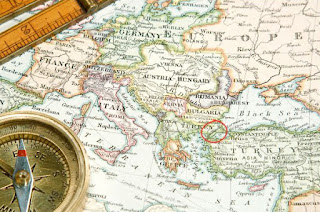 |
| Images: Canva |
If you are a member of Medium, PLEASE READ THIS POST THERE. You can also subscribe and be notified each time I post on Medium.
On most days that start with W, I have a couple of wines with a couple of friends. We are known as the ‘Wednesday Boys’ and the establishment we go to serves us a glass of white followed by one of red and then quizzes us on what wines we have been given. Our hit rate isn’t great, so we not unreluctantly return each week for more practise. (We have been doing this for about 35 years now and still to learn much we have.)
When the Wednesday Boys were teenagers sixty years ago, they started to take notice of cars, girls and goings on beyond their villages. Even before then, they and their friends knew there had been a Second World War. Those that could count also knew that there had been a First World War, but were more fuzzy about that one. They knew about WWII because they would run around with their arms flung out pretending they were spitfires and ratta-tat-tatting imaginary Jerries. Their war knowledge came not from the mouths of their former-soldier fathers, whose lips remained post-war shut until loosened by beer at the Returned Services premises, entry to which children were verboten. It came instead from comics and the Saturday afternoon flicks. At the matinee they would gape (or would have, had their mouths not been full of jubes and aniseed balls) at films starring stiff-upper-lip Brits who went around saying things like "Tally-ho!" and "Chocks away!" before flying Spitfires that shot down (or up) slightly more realistic Jerries.
Later, after they stopped smirking at the words of the rude song they had somehow learnt that compared the presence, absence or size of the testicles of Hitler and his henchmen ('Hitler had only one big...', etc.), curiosity about the global how’s-your-father began to manifest itself. It was aided by history books, especially those with grainy photos of battles and people who were considered important enough to be in the tome. One such person, who dressed in a more fuddy-duddy way than his successor as the UK's Prime Minister, was Neville Chamberlain. (Wing-tip shirt collar and top hat as opposed to Churchill's bow tie and homburg). As Chamberlain had been preceded by Baldwin, it seemed that some sort of alphabetical queue for UK PM was forming. (The Brits were famous for inventing orderly waitings-in-line.) That was until the premier alphabet apple cart was upset by Attlee, who came after Churchill when Winston was famously rejected by the post-war electorate.
 |
| Neville Chamberlain. Source: Public domain photo https://commons.wikimedia.org/w/index.php?curid=103398845 |
Contemporary photos of Chamberlain often show him climbing out of a prime-ministerial car or clambering down the steps of a plane clutching a sheaf of papers. In film-reel footage he seemed to be victoriously proclaiming, in a very quavery voice, "Peas for our thyme! Peas for our thyme!" (Often mis-quoted as "Peas in our thyme!") Some may have thought he was exhorting the British citizenry to take up allotment gardening (which surprisingly became a critical factor in maintaining Britain’s wartime food supply).
All this happened in September 1938, shortly after Chamberlain had met with Herr Hitler and believed he had brought home a deal that would stop Germany from doing more outrageous war-like things in Europe. Lesson 1 for Neville: you can’t trust megalomaniacs who spit and froth at the mouth while whipping storm troopers, panzer divisions, and stuka pilots into a frenzy. Hitler had spotted Chamberlain’s weakness - he was an appeaser, someone who believed that reason and signed pieces of paper detailing concessions by the power-under party would prevail in the bear pit if accompanied by enough tellings-off of the party with the power. In fact, not only was Neville most comfortable when he was tutt-tutting Hitler, but his government had a policy of appeasement towards Germany. In such circumstances, Adolf decided he could take his eye off Britain, but hadn’t banked on its government rolling Chamberlain in 1940 and replacing him with Churchill. The new PM had a very different reading of Adolf’s Third Reich tea leaf intentions. Lesson 1 of a large number not heeded by Hitler.
 |
| Winston Churchill. Image: Canva |
A long time after the terrible events that were about to engulf the globe, the Wednesday Boys were imbibing . “What do you make of the goings-on in Russia?” asked WB1. It was late June 2023. As usual, they were putting off talking about the white wine in front of them as they frantically searched for missing-in-action neural pathways that might help in its identification. “Dunno,” said WB2. “Putin’s a murderous tyrant and Prigozhin’s a murdering mercenary. Neither does appeasement – who assassinates the other first wins (and we now know who that was)… you know what, I'm pretty sure this is a Chardonnay.”
They were interrupted by mine-wine-bar host. “What’s the verdict?” he asked in his slightly (but genuine) French accent, eyebrows askance. A set of definite responses from all the WBs revealed they had hit the mark. It was indeed a Chardonnay.
 |
| Image: Canva |







